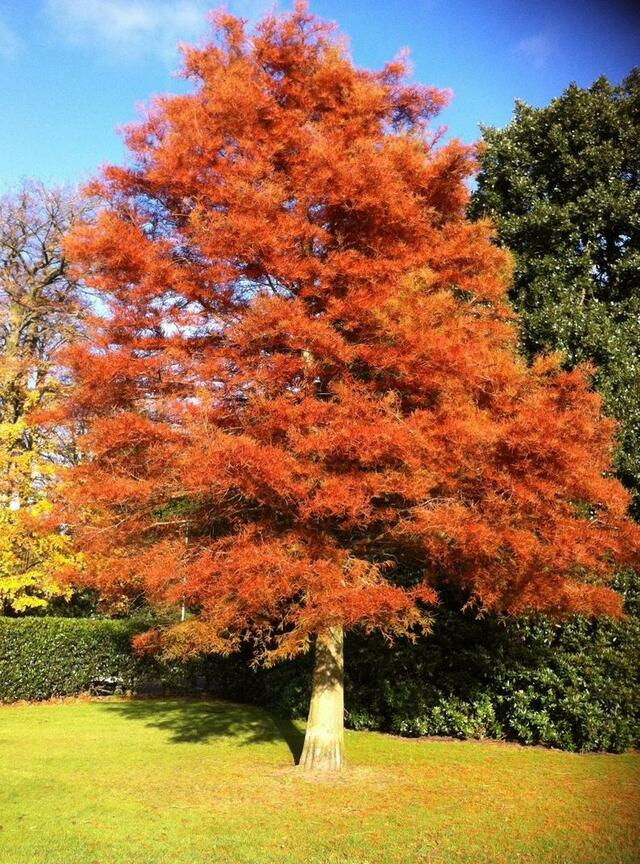By David Wall, Mt. Pleasant Master Gardener
Several years ago, I wrote an article on the Dawn Redwood (Metasequoia glyptostroboides), a tree virtually unknown in our area. Howard Garrett, in his latest FB column, also recommended the tree, so let’s talk about it. No, it’s not the giant redwood or sequoia, but it is a beautiful, fast growing, majestic tree. In good soils, 2-3 feet a year is common, and under preferred conditions, a growth rate of 5feet is possible. Diameter breast high (DBH) can reach 6 feet. It is considered the fastest growing conifer, although it’s a deciduous conifer, having basically changed from evergreen to deciduous way back in antiquity.
Dawn redwoods are an ancient tree, almost rivaling the gingko, and they are considered living fossils. In the United States, they were basically unknown until circa 1950. All redwoods and sequoias are cypress trees, and the dawn redwood, although better looking, resembles a bald cypress, which is a close relative. The tree is quite common now in the Dallas area.
The tree can grow in almost any soil except sand. They tolerate dry alkaline soil, but prefer moist, acidic soil. For those in lowland areas that flood, the tree will grow even in standing water for considerable portions of the year. On the other hand, they tolerate dry soils! For those with highly acidic soil, the tree considers a pH of 4.5 to be the ideal soil. They require at least six hours of sunlight during the growing season, but are otherwise relatively carefree.
Though the smallest of the three redwood species, 100 feet tall in urban areas is not unusual. Wingspread is normally 25-35 feet, but in good conditions the limbs will exceed this width. Tree shape is Christmas pyramid. Dawn redwoods should never be planted close to a house, and the tree is strictly for a large yard.






